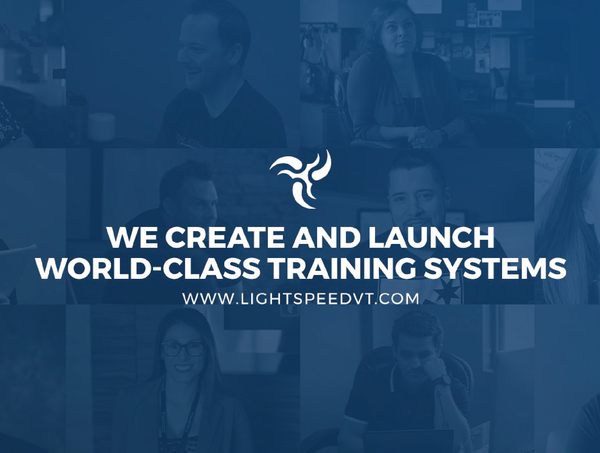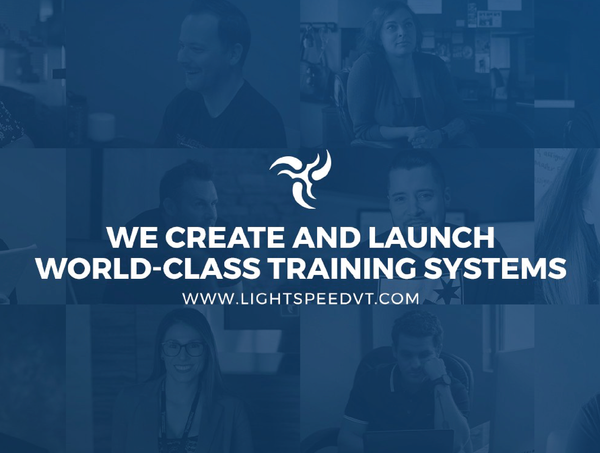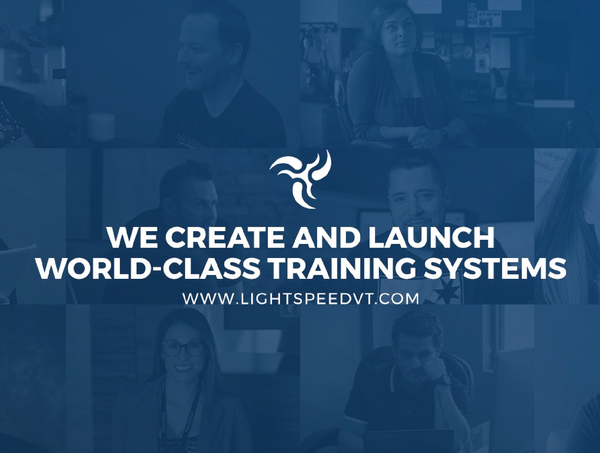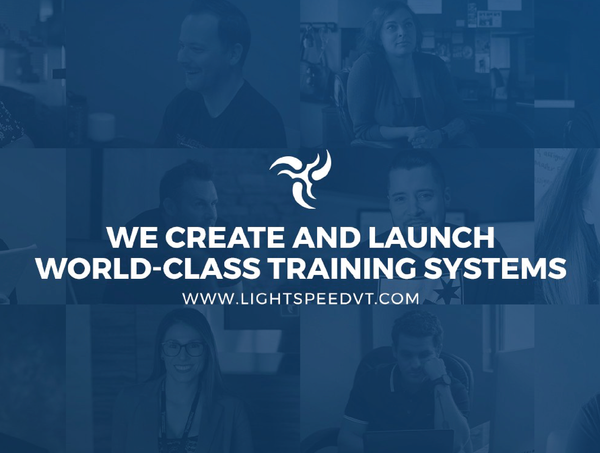LMS For Hospitals: Lightspeed VT

Learning Management Systems (LMS) have become an integral part of the healthcare sector, offering a streamlined approach to managing the continuous education and compliance training of healthcare professionals. Lightspeed VT stands out as a specialized LMS tailored for hospitals, providing a range of features designed to enhance the learning experience for medical staff. This article delves into the significance of LMS in hospitals, examines the unique offerings of Lightspeed VT, discusses strategies for implementing LMS, shares success stories, and explores future trends in hospital learning systems.
Key Takeaways
- LMS plays a crucial role in hospitals by facilitating compliance training and continuing education for healthcare workers.
- Lightspeed VT offers a customizable and scalable LMS solution, emphasizing user experience and accessibility for hospital staff.
- Effective implementation of LMS in hospitals requires assessing training needs, engaging staff, and measuring the system's impact.
- Case studies reveal that Lightspeed VT has been successfully adopted by healthcare institutions, overcoming challenges and demonstrating long-term benefits.
- Future trends in hospital LMS may include the integration of artificial intelligence and machine learning to enhance e-learning experiences.
Understanding LMS in the Healthcare Sector
The Role of Learning Management Systems in Hospitals
Learning Management Systems (LMS) have become integral to the healthcare sector, particularly within hospital settings. They serve as a central hub for the delivery, tracking, and management of training and educational content for healthcare professionals. LMS platforms facilitate a streamlined approach to learning, ensuring that staff remain up-to-date with the latest medical practices, compliance standards, and technological advancements.
- Centralized training repository
- Compliance tracking
- Performance and learning analytics
- Easy access to continuing education
- Integration with hospital systems
The adaptability of LMS allows for a personalized learning experience, catering to the diverse educational needs of healthcare staff. This flexibility is crucial in an environment where continuous learning and adherence to healthcare regulations are paramount.
Effective implementation of an LMS in a hospital can lead to improved patient care, as it ensures that healthcare workers are well-trained and knowledgeable about current medical procedures and policies. Moreover, it can significantly reduce administrative burdens by automating many aspects of the training process.
Compliance and Continuing Education for Healthcare Professionals
In the healthcare sector, compliance and continuing education are critical for maintaining the quality of care and adhering to legal and ethical standards. Healthcare professionals are required to stay up-to-date with the latest medical knowledge and practices, as well as regulations that govern patient privacy, medical billing, and workplace safety.
Compliance training covers a wide range of topics, including patient privacy, medical billing and coding, workplace safety, and infection control, among others. This ongoing education is essential for ensuring that healthcare staff are competent and capable of delivering high-quality patient care.
To effectively manage these requirements, hospitals often utilize Learning Management Systems (LMS) that offer structured courses and track progress. Here's a brief overview of the types of compliance training typically required in hospitals:
- Patient Privacy: Understanding HIPAA regulations and how to protect patient information.
- Medical Billing and Coding: Accurate coding for insurance and billing purposes.
- Workplace Safety: Training on OSHA standards to prevent workplace injuries.
- Infection Control: Best practices to minimize the spread of infections.
By integrating LMS with hospital operations, healthcare institutions can ensure that their staff are not only compliant with current laws and regulations but are also equipped with the knowledge to excel in their roles.
Integrating LMS with Hospital Information Systems
Integrating a Learning Management System (LMS) with existing Hospital Information Systems (HIS) is a critical step in streamlining healthcare education and training. Seamless integration ensures that data flows effortlessly between systems, enhancing the efficiency of training programs and reducing administrative burdens.
- Data Synchronization: Ensures that user records and training progress are up-to-date across systems.
- Single Sign-On (SSO): Allows healthcare professionals to access the LMS without multiple logins, saving time and improving security.
- Reporting and Analytics: Integrated systems provide comprehensive reporting capabilities, enabling better tracking of training outcomes and compliance.
By integrating the LMS with HIS, hospitals can leverage the full potential of their technology investments, creating a cohesive environment for learning and patient care management.
Successful integration often involves collaboration between IT departments, LMS vendors, and healthcare educators to tailor the system to the hospital's unique needs. It's not just about the technology; it's about creating a system that works for the people who use it every day.
Lightspeed VT: A Closer Look
Key Features of Lightspeed VT for Hospitals
Lightspeed VT stands out in the healthcare sector with its robust set of features designed to streamline education delivery and track learner progress. Hospitals can leverage this platform to empower their staff with a comprehensive learning experience.
- Customizable Learning Paths: Tailor training programs to meet the specific needs of different hospital departments.
- Interactive Content: Engage learners with interactive modules that enhance retention and understanding.
- Tracking and Reporting: Monitor staff progress with detailed analytics and reporting tools.
- Integration Capabilities: Seamlessly integrate with existing hospital information systems for a unified workflow.
Lightspeed VT's intuitive design and flexible architecture make it an ideal choice for hospitals looking to improve their training processes and ensure compliance with healthcare regulations.
With its focus on user experience, Lightspeed VT provides accessibility across various devices, ensuring that staff can learn at their own pace and convenience. The platform's scalability allows it to grow alongside the hospital, accommodating an increasing number of users and more complex training scenarios.
Customization and Scalability
Lightspeed VT stands out in the healthcare sector for its highly customizable and scalable learning solutions. Hospitals can tailor the platform to meet specific training requirements, ensuring that content is relevant and engaging for healthcare professionals. Scalability is a critical feature, allowing institutions to expand their training programs in line with organizational growth and changes in healthcare regulations.
- Customization: Lightspeed VT offers a range of tools and settings that enable hospitals to create a personalized learning environment. This includes custom branding, tailored learning paths, and the ability to integrate with existing hospital systems.
- Scalability: As hospitals grow, so do their training needs. Lightspeed VT's architecture is designed to handle increased loads, with the capability to add more users and courses without compromising performance.
The flexibility of Lightspeed VT ensures that hospitals can adapt to the ever-changing landscape of healthcare education, making it a future-proof choice for institutions looking to invest in a robust LMS.
User Experience and Accessibility
When it comes to the adoption of any Learning Management System (LMS) in hospitals, user experience and accessibility are paramount. Lightspeed VT has been designed with a focus on intuitive navigation and ease of use, ensuring that healthcare professionals can concentrate on learning without technological barriers. The platform's responsive design adapts to various devices, from desktops to tablets and smartphones, allowing users to access training materials on-the-go.
Accessibility features are also a critical aspect of Lightspeed VT, with options to accommodate users with different needs. This includes screen reader compatibility, keyboard navigation, and customizable text sizes. Such inclusive design principles ensure that all staff members, regardless of their abilities, can benefit from the LMS.
The seamless integration of Lightspeed VT with hospital information systems allows for a unified user experience, enhancing the efficiency of training processes.
To illustrate the commitment to user accessibility, here is a snapshot of the resources available on the LightSpeed VT website:
- Knowledge Base
- Screencast Demos
- FAQ
- Blog
- Contact Us
- API Access
- CRM Integrations
- Disable Dark Mode
These resources provide users with the necessary tools and support to maximize their use of the LMS, contributing to a positive user experience.
Implementation Strategies for LMS in Hospitals
Assessing Hospital Training Needs
Before implementing a Learning Management System (LMS) like Lightspeed VT, hospitals must first assess their training needs. Identifying the specific skills and knowledge that healthcare professionals require is crucial for tailoring the LMS content and ensuring its effectiveness.
To systematically evaluate training needs, hospitals can consider the following aspects:
- Current competency levels of staff
- Required certifications and compliance standards
- Changes in healthcare protocols and technology
- Patient care quality and safety goals
By conducting a thorough needs assessment, hospitals can prioritize training modules and allocate resources more efficiently. This foundational step not only informs the customization of the LMS but also sets the stage for measuring its impact on hospital operations.
Engaging Staff and Encouraging Adoption
Successfully engaging hospital staff in the adoption of a new Learning Management System (LMS) like Lightspeed VT requires a strategic approach. It's essential to communicate the benefits clearly and provide adequate training to ensure a smooth transition. Here are some steps to consider:
- Identify Champions: Select enthusiastic staff members who can act as LMS advocates.
- Tailored Training: Offer training sessions that cater to different learning styles and job roles.
- Feedback Loop: Establish a system for staff to provide feedback and suggest improvements.
- Incentivize Usage: Consider rewards or recognition for staff who actively engage with the LMS.
By fostering a positive attitude towards the LMS and addressing concerns proactively, hospitals can create a culture of continuous learning and improvement.
It's also important to monitor usage and provide ongoing support to maintain engagement levels. Regular updates and the addition of new content can keep the LMS fresh and relevant for users.
Measuring the Impact of LMS on Hospital Operations
To gauge the effectiveness of a Learning Management System (LMS) like Lightspeed VT in a hospital setting, it's crucial to measure its impact on various operational aspects. This involves analyzing key performance indicators (KPIs) before and after LMS implementation.
For instance, hospitals can track metrics such as the time required to complete mandatory training, the pass rates of compliance tests, and the frequency of policy updates accessed by staff. Additionally, user satisfaction surveys can provide insights into how the LMS is perceived by healthcare professionals.
By systematically evaluating these metrics, hospitals can identify areas where the LMS is delivering value and where improvements may be needed.
Here is an example of how data might be structured:
| Metric | Pre-LMS Implementation | Post-LMS Implementation |
|---|---|---|
| Training Completion Time | 10 hours | 7 hours |
| Compliance Test Pass Rate | 75% | 90% |
| Policy Update Access Frequency | Monthly | Weekly |
Regular assessment of these metrics ensures that the LMS remains aligned with the hospital's educational goals and operational efficiency.
Case Studies: Lightspeed VT in Action
Success Stories from Healthcare Institutions
The adoption of Lightspeed VT in healthcare institutions has led to remarkable success stories. Hospitals have reported significant improvements in staff training efficiency and compliance rates. One hospital saw a 40% increase in compliance training completion within the first six months of implementation.
- Enhanced staff engagement
- Streamlined training processes
- Improved compliance with healthcare regulations
- Increased patient satisfaction scores
The integration of Lightspeed VT with existing hospital systems has been seamless, leading to a more cohesive learning environment.
These achievements underscore the value of a robust LMS in supporting the complex needs of healthcare organizations. Lightspeed VT's features, support services, and customization options have been pivotal in these transformations.
Challenges and Solutions in LMS Deployment
Deploying a Learning Management System (LMS) like Lightspeed VT in hospitals comes with its unique set of challenges. Ensuring compatibility with existing hospital information systems is often a primary concern. Integration issues can lead to significant delays and increased costs if not managed properly.
- Technical Difficulties: Hospitals may face technical hurdles such as software incompatibility or inadequate IT infrastructure.
- User Resistance: Staff may be resistant to change, preferring traditional methods over new technology.
- Training and Support: Adequate training and ongoing support are crucial for successful LMS adoption.
- Data Security: Protecting patient and hospital data within the LMS is paramount.
To overcome these challenges, solutions are tailored to each hospital's needs. For instance, Lightspeed VT offers extensive customization options to ensure seamless integration with hospital systems. Additionally, a focus on user-friendly design helps to minimize resistance from staff. Providing comprehensive training programs and responsive technical support can facilitate smoother transitions and encourage user adoption.
It is essential to maintain a balance between technological advancement and user-friendliness to achieve a successful LMS deployment in the healthcare environment.
By addressing these challenges proactively, hospitals can leverage the full potential of Lightspeed VT to enhance their educational programs and compliance training, ultimately leading to improved patient care.
Long-term Benefits of Using Lightspeed VT
The adoption of Lightspeed VT in hospitals has demonstrated significant long-term benefits. Hospitals have seen a marked improvement in staff proficiency and patient care as a result of consistent and comprehensive training programs. The ability to track and report on training outcomes has enabled healthcare institutions to align their educational efforts with broader organizational goals.
- Enhanced staff retention through ongoing professional development
- Improved compliance with healthcare regulations
- Increased efficiency in hospital operations
- Scalability to meet the growing demands of the healthcare sector
Lightspeed VT's robust analytics provide insights that drive strategic decision-making, ensuring that training initiatives are not only effective but also contribute to the hospital's long-term success.
The platform's emphasis on user engagement and content relevancy has fostered a culture of continuous learning. Hospitals utilizing Lightspeed VT have reported a positive impact on both employee satisfaction and patient outcomes, solidifying its role as a pivotal tool in healthcare education.
Future Trends in Hospital Learning Systems
Innovations in E-Learning for Healthcare
The landscape of e-learning in healthcare is rapidly evolving, with new technologies and methodologies emerging to enhance the learning experience for professionals. Innovative strategies are being adopted to make education more accessible, personalized, and effective.
One such approach is the use of rapid eLearning strategies, which streamline the creation and deployment of training materials. This allows healthcare institutions to quickly adapt to changes in medical knowledge and regulations. Rapid eLearning is not only efficient but also fosters a culture of continuous improvement among healthcare professionals.
- Virtual Reality (VR) and Augmented Reality (AR) for immersive learning experiences
- Adaptive learning platforms that tailor content to individual needs
- Gamification to increase engagement and retention
- Mobile learning for on-the-go access to training
The integration of these innovations is transforming how healthcare professionals engage with continuing education, making it more interactive and impactful than ever before.
Integrating Artificial Intelligence and Machine Learning
The integration of Artificial Intelligence (AI) and Machine Learning (ML) into hospital learning systems is transforming the landscape of healthcare education. AI-driven analytics can personalize learning experiences, adapting to the individual needs of healthcare professionals. ML algorithms can analyze vast amounts of data to identify trends and predict learning outcomes, enhancing the effectiveness of training programs.
- Personalization of learning paths for individual healthcare professionals
- Predictive analytics to improve course offerings and anticipate educational needs
- Automated administrative tasks to free up time for human educators
The potential of AI and ML in healthcare education extends beyond just personalized learning. These technologies can also streamline administrative processes, allowing for more efficient management of learning systems.
Incorporating AI and ML into LMS not only benefits the learners but also provides valuable insights for the institutions. By analyzing learning patterns and outcomes, hospitals can make data-driven decisions to improve their educational strategies and ultimately, patient care.
Predicting the Evolution of LMS in Healthcare
As we look towards the future of Learning Management Systems (LMS) in healthcare, several trends are poised to shape their evolution. The integration of advanced technologies such as artificial intelligence (AI) and machine learning (ML) is expected to revolutionize the way LMS are used in hospitals.
- Enhanced personalization of learning experiences
- Improved predictive analytics for learner performance
- More efficient content delivery and assessment mechanisms
These innovations will likely lead to a more dynamic and responsive learning environment, catering to the individual needs of healthcare professionals. The Lightspeed VT platform, with its current capabilities, is well-positioned to adapt to these advancements, ensuring that hospitals remain at the forefront of educational technology.
The potential for LMS to transform into intelligent learning ecosystems that not only deliver content but also anticipate the needs of learners and adapt accordingly is immense.
With the healthcare sector's continuous demand for up-to-date knowledge and compliance training, the evolution of LMS is not just anticipated; it is necessary. The table below illustrates the current usage distribution of LMS technologies in Canada, highlighting the market position of Lightspeed VT among its competitors.
| Technology | Websites | % |
|---|---|---|
| LearnDash | 1,573 | 24.77 |
| Moodle | 1,370 | 21.57 |
| LearnPress | 690 | 10.87 |
| ... | ... | ... |
| LightSpeed VT | 2 | 0.03 |
As the website offers sign-in, features, pricing, demo, blog, and more, Lightspeed VT is set to expand its presence and influence in the LMS market for healthcare.
As healthcare continues to evolve, staying ahead of the curve in hospital learning systems is crucial. Our platform offers cutting-edge features designed to enhance training and knowledge dissemination in medical settings. To see how our solutions can transform your institution's learning capabilities, visit our website and schedule a free demo today. Embrace the future of hospital education with us and ensure your team is equipped with the latest tools and techniques.
Frequently Asked Questions
What is a Learning Management System (LMS) in the healthcare sector?
In the healthcare sector, a Learning Management System (LMS) is a software application or platform that enables hospitals and healthcare institutions to deliver, track, and manage training and education programs for their staff. It is designed to ensure that healthcare professionals have continuous access to necessary training modules, compliance materials, and educational resources.
How does Lightspeed VT cater to the specific needs of hospitals?
Lightspeed VT is an LMS that provides hospitals with a customizable and scalable platform to create and deliver training content that meets the unique requirements of healthcare professionals. It includes features such as compliance tracking, certification management, and integration with hospital information systems to streamline learning processes.
What are the key features of Lightspeed VT that benefit healthcare institutions?
Key features of Lightspeed VT for healthcare institutions include interactive training modules, real-time reporting and analytics, mobile accessibility, content customization, and integration capabilities with existing hospital systems. These features help institutions maintain compliance and enhance the learning experience for staff.
How can hospitals effectively implement an LMS like Lightspeed VT?
Effective implementation of Lightspeed VT in a hospital setting involves assessing training needs, engaging staff through clear communication and incentives, providing thorough training on the LMS, and setting up a support system for users. It also includes monitoring and measuring the impact of the LMS on hospital operations and staff performance.
Can you provide examples of hospitals that have successfully implemented Lightspeed VT?
While specific examples require research, many healthcare institutions have successfully implemented Lightspeed VT by tailoring the platform to their training needs, ensuring staff engagement, and leveraging the system's reporting tools to monitor progress and outcomes. Case studies can provide insights into these success stories and the strategies used.
What future trends are expected in the development of hospital learning systems like Lightspeed VT?
Future trends in hospital learning systems may include the increased use of artificial intelligence and machine learning to personalize learning experiences, the integration of virtual and augmented reality for immersive training, and the use of predictive analytics to tailor training programs to anticipated healthcare challenges and skill requirements.




